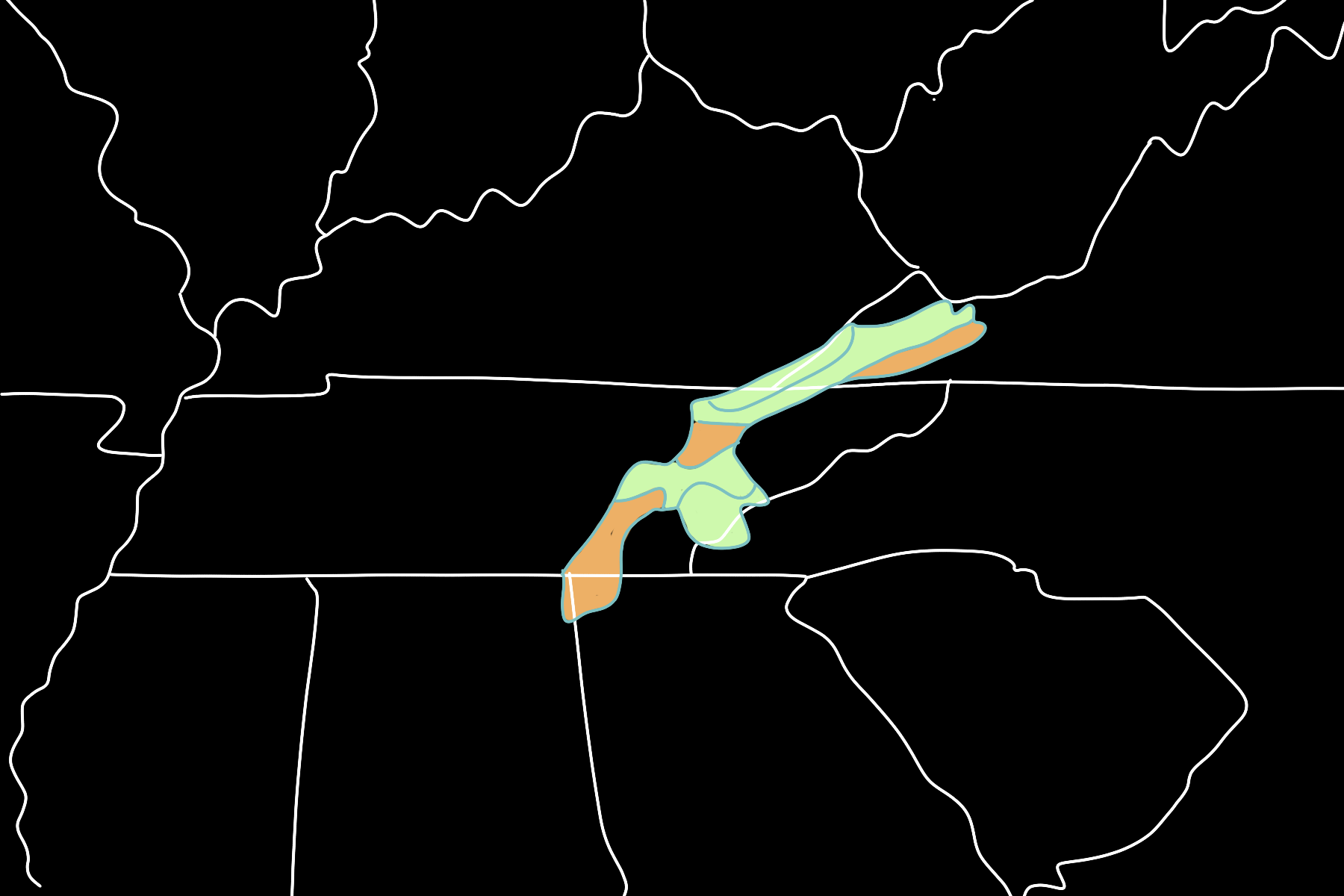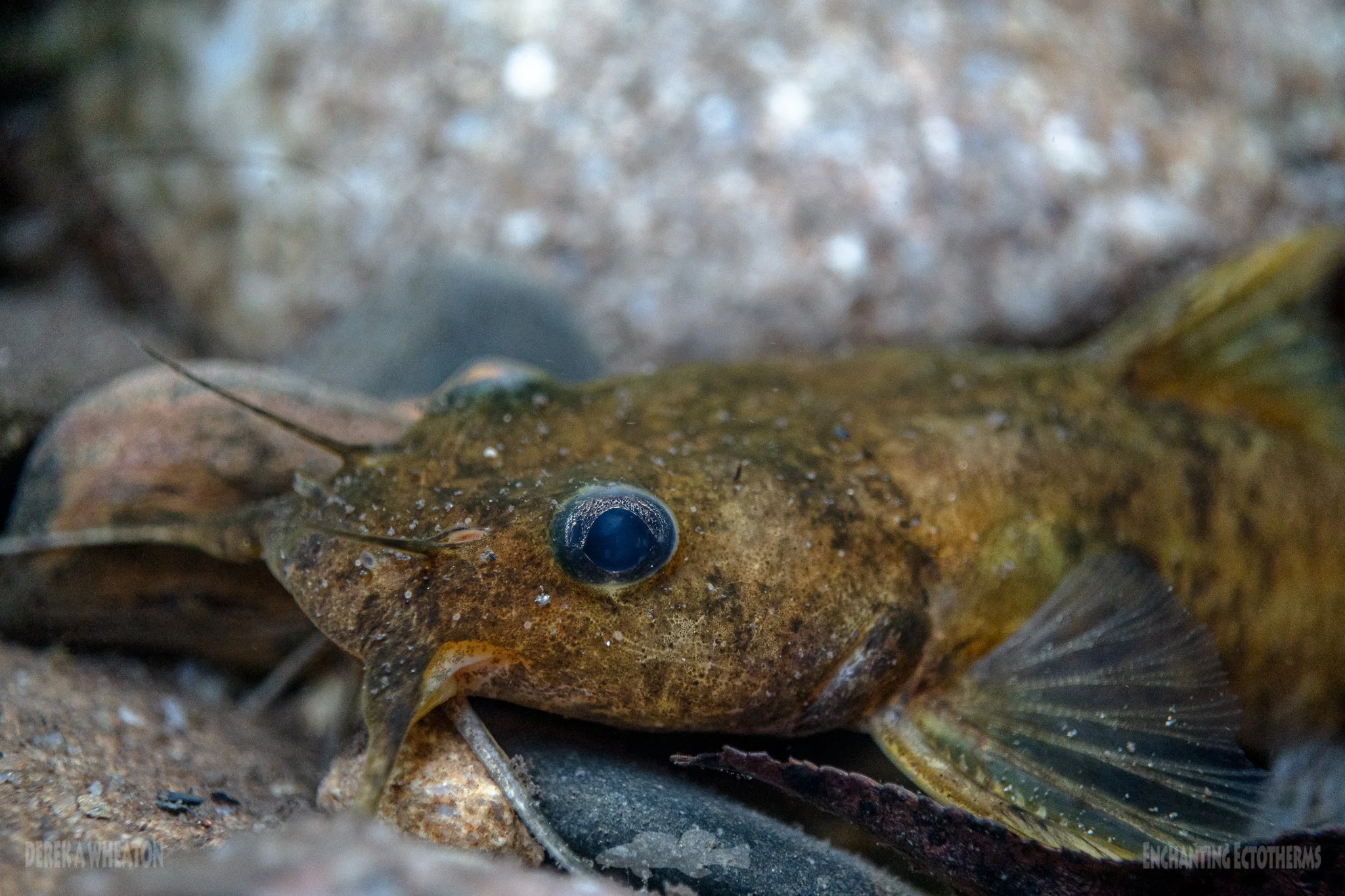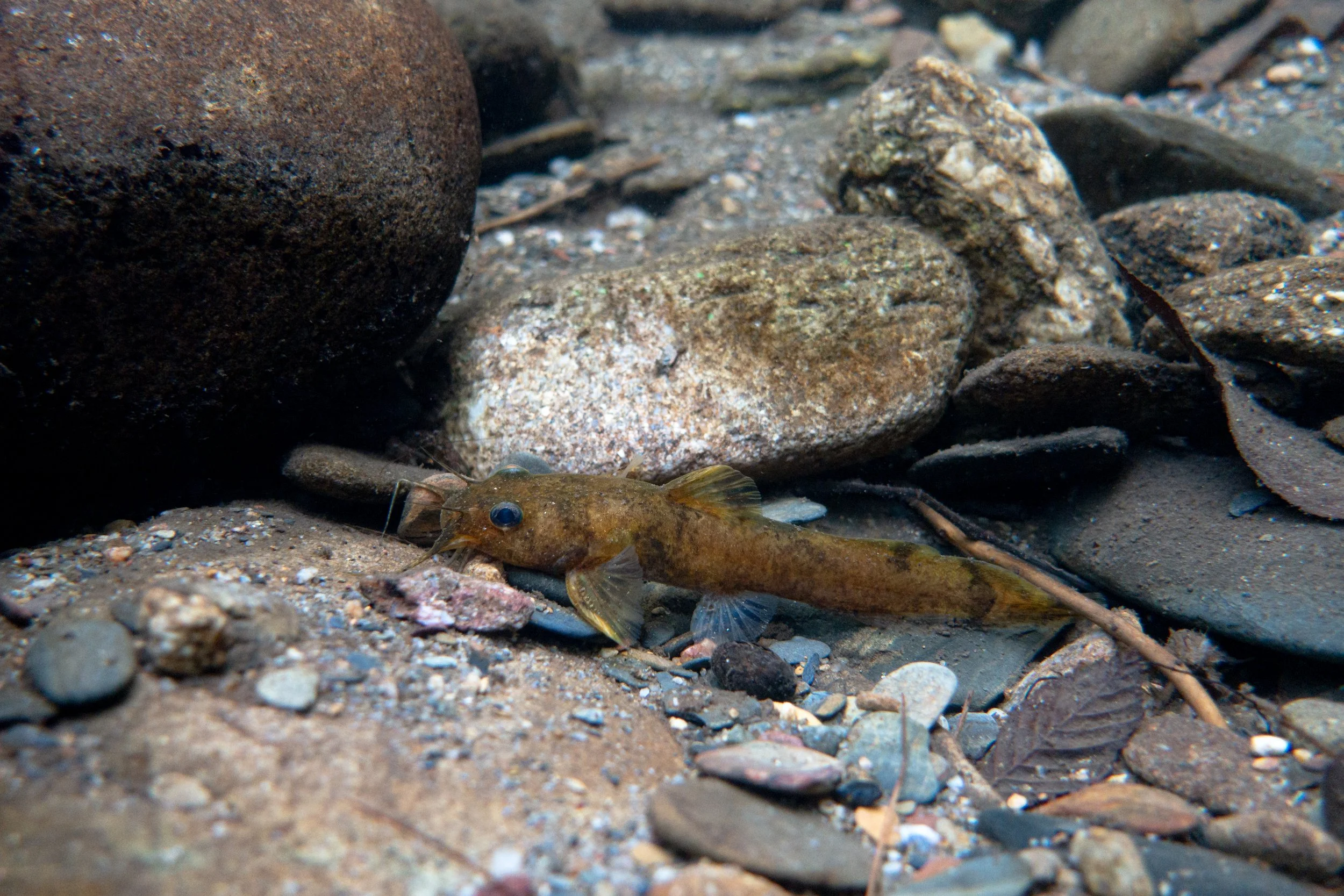Image by Joel Sartore
Yellowfin Madtom | Noturus flavipinnis
Status: IUCN: Vulnerable; USFWS: Threatened (1997)
CFI Status: Reared at CFI from 1986 - Present to develop propagation protocols, reintroduction, augmentation, and monitoring. (What do these terms mean?)
The Yellowfin Madtom (Noturus flavipinnis) holds a special place in the history of CFI, as it was the catalyst for the organization's founding in 1986. This species became the focus of CFI's first grant and represents the longest-running initiative for any Tennessee species. Over the next decade, one of our primary objectives is to continue propagation efforts to establish additional populations within its native range, supporting the ultimate goal of removing the Yellowfin Madtom from the Endangered Species Act.
-
Yellowfin Madtoms exhibit nocturnal behaviors that make them challenging to monitor during the day. By daylight, these elusive fish remain concealed under slab rocks, effectively avoiding detection if they are in deep pools. To overcome this we conduct nighttime snorkeling surveys, a technique that has proven invaluable for studying the species. Equipped with waterproof flashlights we snorkel after dark, observing Yellowfins as they emerge from their rocky shelters to forage.
During the early surveys of this species we made a surprising discovery: Yellowfin Madtoms can be spotted from above the surface. As we walked along the stream with flashlights, the light reflected distinctly off their eyes, making them easier to locate.
Furthermore, juvenile Yellowfin Madtoms were observed utilizing submerged leaf piles as habitat. This behavior provides an opportunity for daytime collection of juveniles using dip nets, offering additional insights into their life stages and habitat preferences.
-
Male Yellowfin Madtoms exhibit exceptional paternal instincts, diligently guarding their eggs beneath rocks for up to a month. During this time, they often fast, but they can use an innovative feeding behavior by spinning rapidly to create suction and procure food through their shelter. While rare, males may resort to cannibalism under extreme circumstances, consuming their eggs to recover calories rather than allowing them to be lost to predators.
In our facility we replicate natural nesting environments using shelters crafted from plant pot saucers, creating the same type of cavity they would seek out in the wild, where males can care for the eggs until hatching. This method has proven highly effective, reflecting the species' natural behaviors.
Although we have successfully bred the Yellowfin Madtom at CFI, our preferred method of propagation is through nest collections in late spring into early summer. During this period, males are typically nested under large slab rocks in the river pools. This approach allows us to not only achieve higher egg and larval survivorship rates, but also helps to maintain greater genetic diversity in the populations we release back into the wild.
-
The Yellowfin Madtom has become a symbol of successful conservation efforts, and CFI is committed to advancing these efforts. By continuing propagation work, restoring populations within their native range, and refining our understanding of this species, we aim to secure a brighter future for the Yellowfin Madtom. With ongoing restoration efforts, we remain hopeful that the Yellowfin Madtom's population growth and range expansion will lead to its down-listing in the near future, a significant milestone in its recovery journey.
Native Range
Green: Current / Orange: Historical
Threats
Habitat fragmentation, sedimentation, and impoundments.
What do these terms mean?
Yellowfin pair holed away in the saucer.
Spawning Habitat Preferences: Late spring to summer spawners in streams with low flow; they lay clutches of eggs under medium to large-sized flat rocks
Relevant Literature: Dinkins and Shute (1997)
In Partnership With: Brookfield Smoky Mountain Hydropower; Cherokee National Forest Service; Great Smoky Mountain National Parks Service; Southern Region Forest Service; Tennessee Technological University; Tennessee Wildlife Resources Agency; USFWS (Abingdon, VA, Asheville, NC, Cookeville, TN); Virginia Department of Wildlife Resources; World Wildlife Fund










